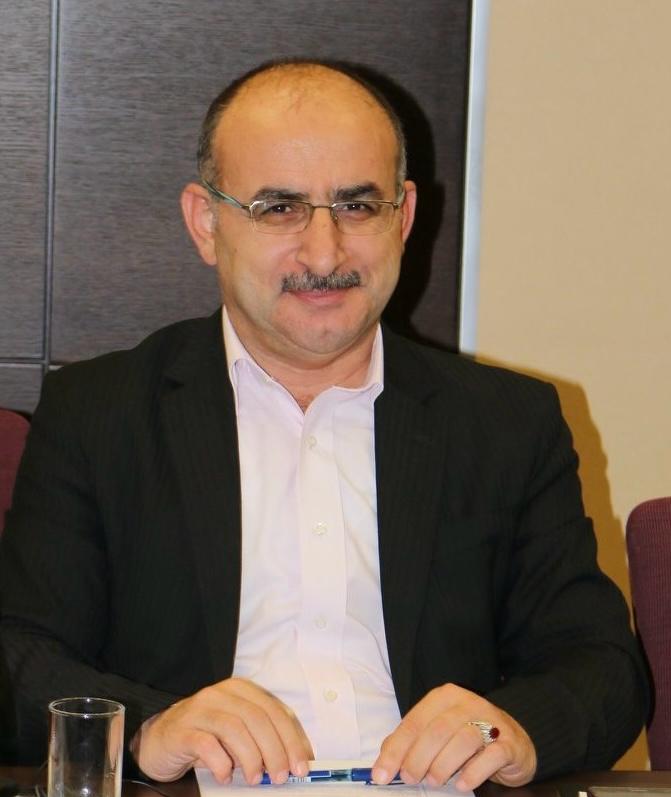Decentralization and National Identity in Syria
By Aqil Said Mahfouz
In a country like Syria, decentralization and identity are often perceived more as threats than opportunities, and more as sources of division, disruption, weakness, and infiltration than as elements of cohesion, order, strength, and resilience. These perceptions are intrinsic to the emergence of the modern state in Syria and the region following the First World War (1914-1918) and during the colonial period marked by the French Mandate over Syria (1920-1946). The perception of threats versus opportunities regarding decentralization and identity has been reproduced during the Syrian crisis since 2011, particularly after the regime’s downfall at the end of 2024.
When the balance of meaning and power shifts in a country and a deep, protracted conflict threatens the very existence of society and the state, it becomes paramount to unify various formations, regions, aspirations, and stakes around a single idea, under the spirit of a cohesive society and a unified state. For the author, his primary focus and enduring concern over the years have been: How can Syrians establish a stable and sustainable society and state? How can the priorities of society be balanced with those of authority or the state in the context of centralization versus decentralization?
Now is the time to rethink both topics—decentralization and national identity—with as much depth and seriousness as possible, while minimizing politicization. If the prevailing belief among Syrians is that decentralization threatens national identity, it is also time to test the contrary idea: that decentralization could be a key to fostering a more cohesive and stable national identity. Although this text will not delve too deeply into this topic.
For several decades, engaging in a serious or in-depth discussion about decentralization and identity has been challenging. There exists intense disagreement on all aspects of the Syrian phenomenon today, including the nature of the political system and national identity: What political system should be adopted? What identity should be embraced? It is unlikely that Syrians will reach a consensus on these issues anytime soon. In reality, multiple layers of concerns and fears persist, as do miscalculations and misunderstandings. This complexity is further compounded by shifting values among Syrians regarding the meanings of “society” and “state,” and even transcending those concepts, so to speak.
Balance or Perspective
The central question pertains to the potential relationship between decentralization and identity, between identities that exist “below the state” and the formation of a “national identity.” Does decentralization threaten the centralization of meaning and identity within a “society” and “state” in Syria, or is it, conversely, a necessity for establishing a unified meaning and identity within a “Syrian society and state”?
Moreover, this relates to the perceptions of centralization and decentralization. If the country is viewed as composed of regional, linguistic, ethnic, or religious groups and identities that must coexist, the perspective prioritizes (or perhaps champions) regions or territories over the center, decentralization over centralization, and group, sect, or region over society. Conversely, if the country is regarded as a Syrian people and society that encompasses various ethnic, religious, and regional formations, then priority or supremacy—from this perspective—belongs to “society” and “the state.”
This issue is significant, as controversial as it is important, and is considered dangerous by some. It is crucial for societal unity, preventing the growth of divisive and conflicting tendencies, and ensuring the formation of a national identity that encompasses all forms of social structure and composition. However, it is contentious; who makes these decisions, based on what criteria and aspirations? How are the differences and distinctions between various formations, groups, minorities, and majorities managed? This concern is particularly acute for those who fear the dominance of specific groups, narratives, or ideologies, or who apprehend the country fracturing along regional, sectarian, or even customary lines.
Discussion of Decentralization and Identity
In the years following 2011, discussions of decentralization in Syria resembled more rhetorical manipulation than a serious examination or attempt at implementation. It was akin to a political tactic aimed at addressing both internal and external pressures on the political system amid the ongoing, protracted, and deeply rooted conflict that began in 2011 and continued until the regime’s downfall at the end of 2024. This situation may persist in post-Assad Syria, as there are indications of somewhat similar approaches concerning the nature of the political system (whether centralized or decentralized). This dynamic also extends to the discourse on identity. Its meaning is likely to be determined (or rather redefined) from a central perspective as well. This has been the case for several decades and may continue in one form or another, as previously mentioned.
The investigation into identity was one of the reasons why Bashar al-Assad personally ordered the closure of nearly the only research center in Syria in an unfortunate and unjustified manner. This occurred when the Damascus Center for Research and Studies (MEDAD) held a conference on Syrian identity in the context of the ongoing conflict (in January 2018), thereby initiating an intellectual and political debate on the identity crisis within the country. Writers and intellectuals quoted Assad as saying, “Syria does not need research centers.”
When MEDAD announced the National Identity Conference, the president’s advisor remarked, “There is no identity issue in Syria, and it would have been better for the center to focus on crafts and handicrafts!” In reality, much of the regime’s discussion about decentralization and identity has been so exploratory, folkloric, and general that one could argue it hardly pertains to anything substantive. It has been more like a gimmick than a serious effort to address some of the country’s crises.
The Idea of Decentralisation
What is crucial about the idea of decentralization is that the vision for managing life, work, production, and living in the (decentralized) region should stem from the perspective of local actors, reflecting the adage that “the people of Mecca know best.” This perspective acknowledges that the region or area within the country is part of a larger whole. However, this does not mean that localities, regions, or areas should possess a distinct, entity-like identity. Generally, there are no regions in Syria that are purely religious or purely nationalistic, except for some relative concentrations in specific areas. There exist decentralized systems of government in countries considered ethnically and religiously homogeneous or nearly homogeneous, and conversely, centralized systems can exist in ethnically and religiously diverse nations.
Thus, decentralization is part of the dynamics of public policies and the management of social life. While ethnic and religious specificities are important, national social interaction and integration are equally crucial. A society does not need to be ethnically, racially, or religiously pluralistic, nor does it have to have identity appeals and currents for decentralization to occur. In this context, decentralization appears as a ‘political technique,’ a ‘policy technique,’ and a ‘development technique,’ rather than merely an expression of regional, local, or religious appeals.
It is possible to have ‘extended decentralization.’ This means designing certain regions or territories in ways that allow for the emergence and empowerment of specific identities and dynamics according to their social composition—linguistically, religiously, and culturally. In other words, it facilitates the ability of groups, formations, and localities to express themselves and live out their uniqueness, albeit within limits governed by the center or by central controls and standards that these groups and formations help define.
Something akin to federalism
There are no standard patterns of decentralization or federalism. Instead, there are diverse patterns, configurations, and spectrums that vary from one country to another. Decentralization can empower regions, provinces, localities, and communities to adopt policies that extend beyond merely addressing specificities—or managing ethnic and religious interests and aspirations—moving toward something resembling federalism or a variant of it.
However, what is crucial is that decentralization trends do not take on kinetic or structural dimensions that could fracture society and the state, nor should they create identity polarization or lead to conflictual politics. Furthermore, they should not evoke a divisive imagination.
What is equally important is that this should not be determined centrally or be merely a centralized process, whether by a government bureaucracy and an authoritarian political system, or by an ideology or dominant faction exerting coercion and control over politics, society, and the state. There is a need for the structure of the political system and the nature of governance to be a matter of public consensus rather than the outcome of coercion or the rule of the majority.
In conclusion, decentralization is not, in itself, a threat to identity in Syria. Conversely, it is not a remedy for the country’s crises, nor is it a universal solution that can shield society from tyranny and authoritarianism. Instead, it should be seen as a political technique rather than an ideology. It is essential for multi-ethnic and multi-constituent societies, and indeed for societies in general. When decentralization—through its various forms, calls, representations, and experiences—arises from social, political, economic, and cultural dynamics and is based on national consensus, it becomes a factor of cohesion for both ‘society’ and ‘the state.’ It serves as a source of strength and security rather than a source of weakness, imbalance, fragility, or disintegration. This topic holds much to explore.




Comments are closed.